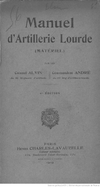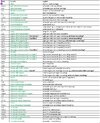Browsing to some materials I started wondering what the abbreviations mean Schneider used for their guns. In this case a document from 1914. Some letters are pretty obvious, but some are not. Can you help my complete the list? Some may seem to make no sense, I am simply filling in for the gun types I know in French (Debarquement (landing), Campagne (field), Montagne (mountain), Position, Obusier (howitzer), Siege, Long, Court (short), Cotes (coast), Bord (naval vessel), Forteresse (fort), Tourelles (turret), Coupole.
75 mm mountain gun: M.D.2.T.3. --> Montagne Debarquement Tourelles (fit as mountain gun, landing gun and turret gun)? The numbers represent versions? I seriously doubt the meaning of D and T.
75 mm mountain gun: M.P.D. --> Montagne Position Debarquement (fit as mountain gun, fixed gun, landing gun)? Also here I seriously doubt the meaning of D.
75 mm mountain gun: M.P.C. --> C for Campagne (field) or Court (short)?
105 mm mountain gun: O.M. --> Obusier Montagne (mountain howitzer)
76,2 mm landing gun: M.C. --> Montagne, C for Campagne or Court? No D for debarquement (landing) in the abbreviation......hmmmm
75 mm field gun: P.R. and P.D. and S.L. exist --> no clue, the L maybe for Long? The S for Siege?
150 mm siege gun: S.C. --> Siege de Campagne?
105 mm field gun: O.C. --> Obusier de Campagne
75 mm mountain gun: M.D.2.T.3. --> Montagne Debarquement Tourelles (fit as mountain gun, landing gun and turret gun)? The numbers represent versions? I seriously doubt the meaning of D and T.
75 mm mountain gun: M.P.D. --> Montagne Position Debarquement (fit as mountain gun, fixed gun, landing gun)? Also here I seriously doubt the meaning of D.
75 mm mountain gun: M.P.C. --> C for Campagne (field) or Court (short)?
105 mm mountain gun: O.M. --> Obusier Montagne (mountain howitzer)
76,2 mm landing gun: M.C. --> Montagne, C for Campagne or Court? No D for debarquement (landing) in the abbreviation......hmmmm
75 mm field gun: P.R. and P.D. and S.L. exist --> no clue, the L maybe for Long? The S for Siege?
150 mm siege gun: S.C. --> Siege de Campagne?
105 mm field gun: O.C. --> Obusier de Campagne








